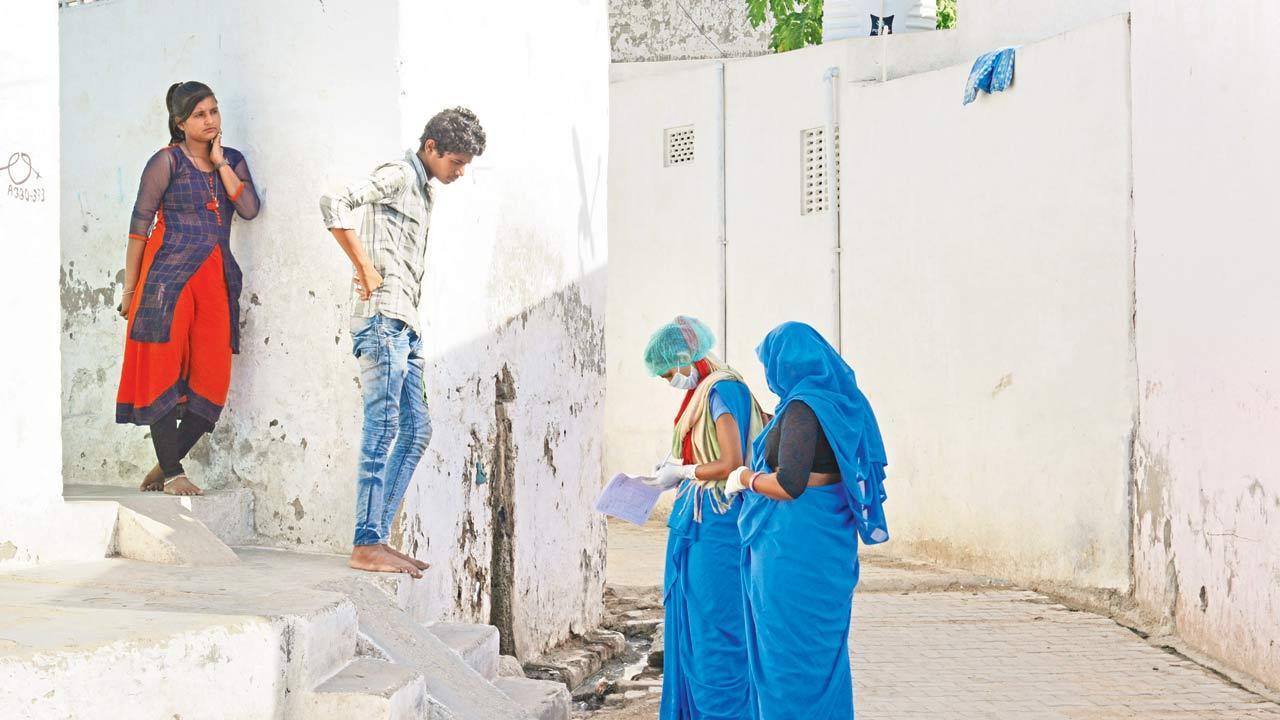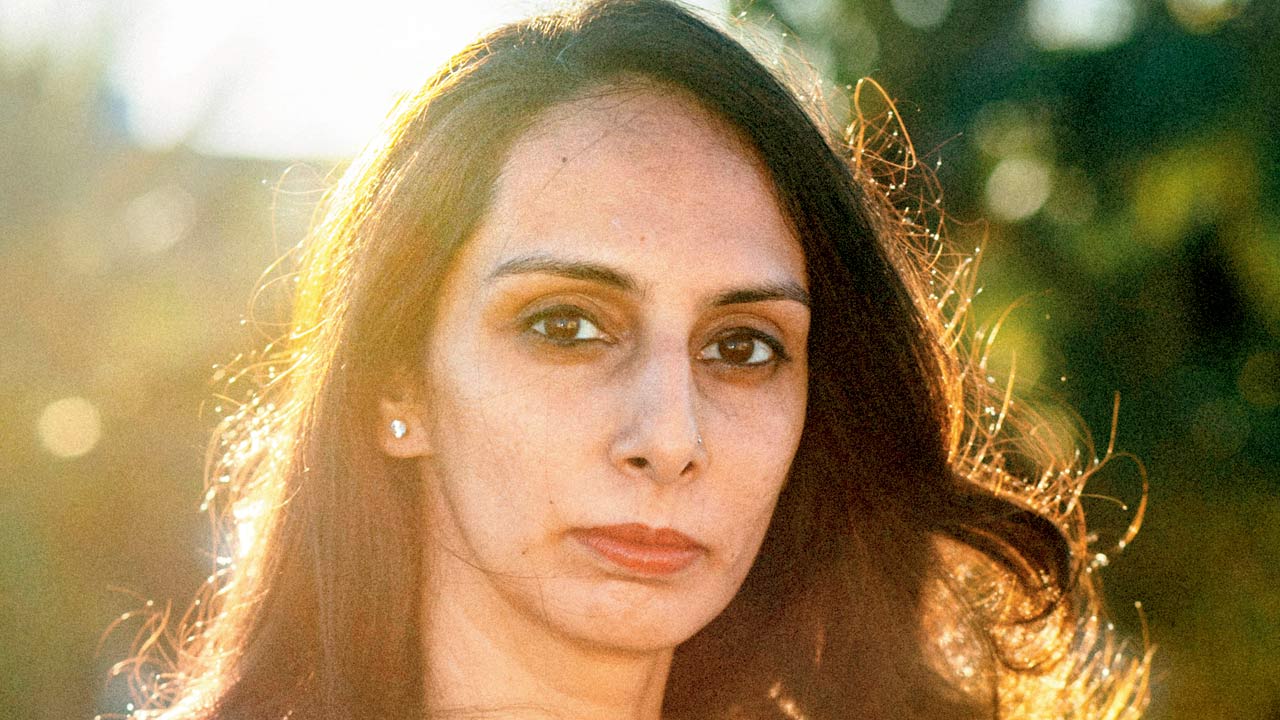Independent data journalist Rukmini S sifts through tomes of fact, fiction and personal reportage for a new book that looks at how numbers can help us understand modern India

Anganwadi workers wearing protective face mask interact with people during a door-to-door survey to check the spread of Coronavirus, in a slum area in Beawar, Rajasthan. Pic/Getty Images
Numbers enlighten, empower, elevate... it can help us make sense of modern India... anticipate the future. But numbers do not exist in a rarefied space. The push and pull of political and social forces around the world don’t leave numbers unaffected,” writes Chennai-based independent data journalist Rukmini S, in her new book, Whole Number and Half Truths (Westland). During the pandemic, Rukmini helped make sense of complex COVID-19 data, with her mini-podcast series, The Moving Curve. In her debut non-fiction, she does the same, except that the scale is large, and the conversations deeper.
ADVERTISEMENT
Edited excerpts from the interview.
In the book, you highlight that accurate crime statistics, most essential for a democracy, seem to elude us, especially due to under-reporting. What does this mean for India?
Under-reporting is just one part of the problem. Presently, violent crimes, and crimes against the body, including sexual crimes against women, are comparatively more likely to be reported than lower-rung property crimes [for example, bicycle or mobile theft].
We also systematically get sexual crimes wrong. I do think that the official statistics misclassify a large share of consensual relationships [those between inter-religious/caste couples, for instance] as sexual crimes. The more we give these conservative values legal backing, the more we will see these numbers rise in absolute terms and make up a great share of sexual crimes. The point is that if you go by the police or NCRB’s [National Crime Records Bureau] statistics alone, you may get a very skewed sense of what India’s crime landscape looks like.
What we might have to increasingly do with data is to triangulate it with other sources. So, we should triangulate officially reported crimes against women with those reported during household surveys, even if they weren’t reported by the police. That might help provide a more focussed attention. Misunderstanding the landscape of crime, would mean misunderstanding the landscape of life in India in general.
 Rukmini S
Rukmini S
Statistics show that India was placed even lower than Pakistan on the belief that civil rights were an “essential feature of democracy”. How crucial is this data to understand the country’s social fabric in the future?
I was quite taken aback by these numbers. We have allowed a liberal narrative to develop, where we believe that there are pockets of conservatism, but the majority of the country is liberal and secular. It’s of course, a narrative that liberals have enjoyed holding dear. But, there is a very strong streak of authoritarianism that runs through the country, which manifests itself as mob violence, cheering of encounter deaths, etc. We have allowed ourselves to believe it is a fringe belief. But, I don’t think that’s actually true.
Religion and caste still matter in the country—in a national survey, 85 per cent people said that marriage between two people of different religions was not acceptable.
When you see as much opposition to inter-caste marriages as you see to inter-religious, it makes me fear that the very endogamous nature of marriage in India hasn’t been dislodged at all. There is an added edge of religious hostilities, which makes it even more socially acceptable to express one’s views than before, as there’s enormous state sanction. But, if you look at the numbers, you will see that Muslim disapproval of inter-religious marriage is as high as among the Hindus. There is a broad resistance to inter-group mixing, which again we don’t acknowledge enough.
I found it interesting to see the study by [researcher] Payal Hathi in the US. While no one in the US would make the argument that racism has disappeared, from the data, you will see that the social norms have changed, ie people don’t think it’s acceptable to state their beliefs, against inter-racial marriages to surveyors anymore. This isn’t true of India. That in itself is an enormous failure of new-India’s democratic project. We should be talking about it more.
You point out in the book, how elections are about ideas, and the assumption that Indians vote for “development” or “religion” would be simplifying the argument. Could you explain?
A part of it is backed by research and data, and another part comes from my own sense of covering elections. While people may not always speak the language of idealism or ideologies, that essentially is what is at play. There is an ideology that they see, believe in and are voting for. I think one of the reasons why this narrative or belief that Indian voters are voting for “urban development” has taken hold is because we have become very literal in how we interpret surveys. In surveys, people will be asked what they are voting for. Sometimes, they will be given an option. Of course, people will say jobs and unemployment matter. Which isn’t to say, it doesn’t. But, there are other forces that are operational. Look at the 2019 General Assembly elections—India was encountering historic unemployment [at the time], and yet again everyone said that they were voting for jobs and growth. These two facts obviously didn’t align. Deeper conversations with voters will tell you about the big ideas that animate their lives. You can’t see such insights [in surveys alone]. The truth is that we do a very poor job of asking questions in surveys, and then do a very literal job of interpreting them.
In the past, India has tried and failed to collect data on “income”. What’s been the biggest challenge?
There are two areas that are part of the problem. Agricultural income is notoriously hard to tabulate, due to issues of seasonality, changes in price structure, etc. There is also the big issue of how to capture issues at the highest end of the spectrum. The rich are hard to survey, and to get a real picture of their incomes is complicated. Also, a majority of Indians have multiple sources of income, which is hard to compute.
The National Sample Survey (NSS) has been labelled unreliable, once too many. Do you think, it’s still needed?
Yes, I think we still need the NSS very much. The issue isn’t that the NSS has been unreliable. The rot in the NSSO [National Sample Survey Office] reports and its statistical architecture pre-dates this government. Some of the issues include not ramping up frequency of surveys, continuing to ask an inordinately large [set of] questions, and under-investment in trained surveyors. In the past too, there have been attempts made to push-back NSSO’s reports—we’ve seen that happen in the UPA era, too. But, what we saw in 2019 hasn’t happened in its history before. First, the government held back the NSSO’s unemployment report, despite it being ready, and published it only after returning to power. The same thing happened with its household consumption expenditure survey—though it was leaked, the government said that it was not good-enough data, and junked it entirely. It’s hard to see any other reason, except that the survey painted the government in an unflattering light. It didn’t suit their narrative. What has happened with the NSSO today is part neglect and current sidelining.
 Subscribe today by clicking the link and stay updated with the latest news!" Click here!
Subscribe today by clicking the link and stay updated with the latest news!" Click here!







